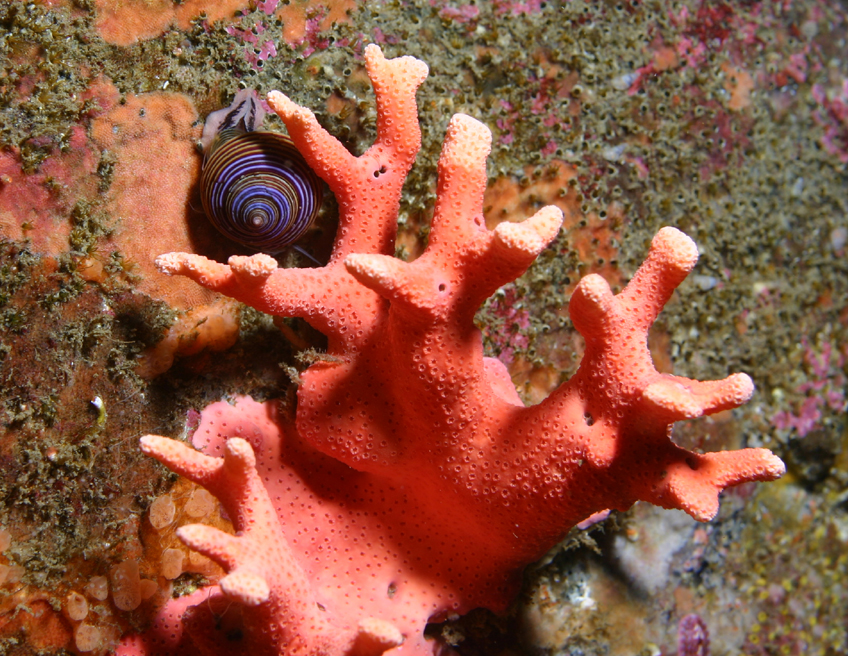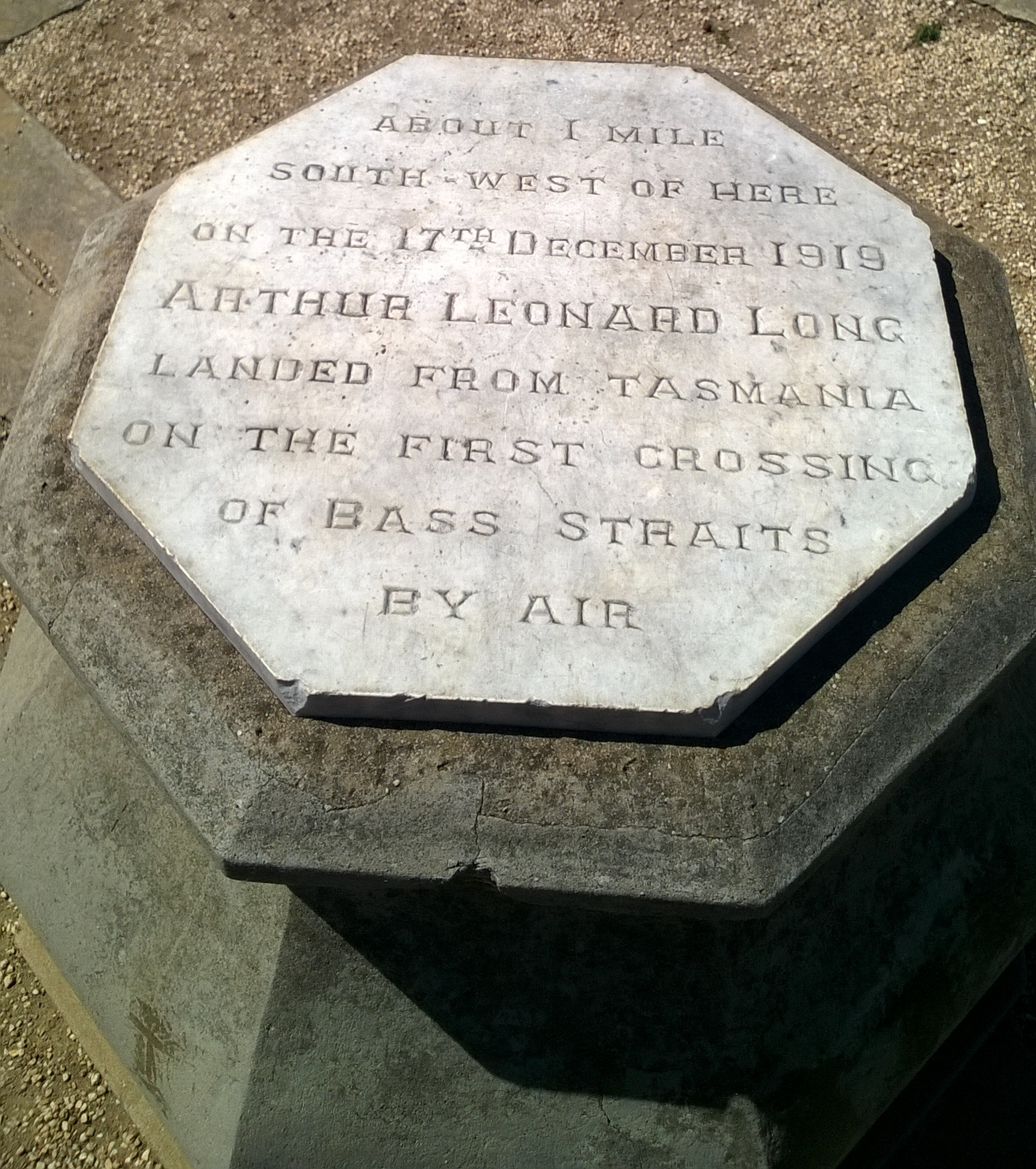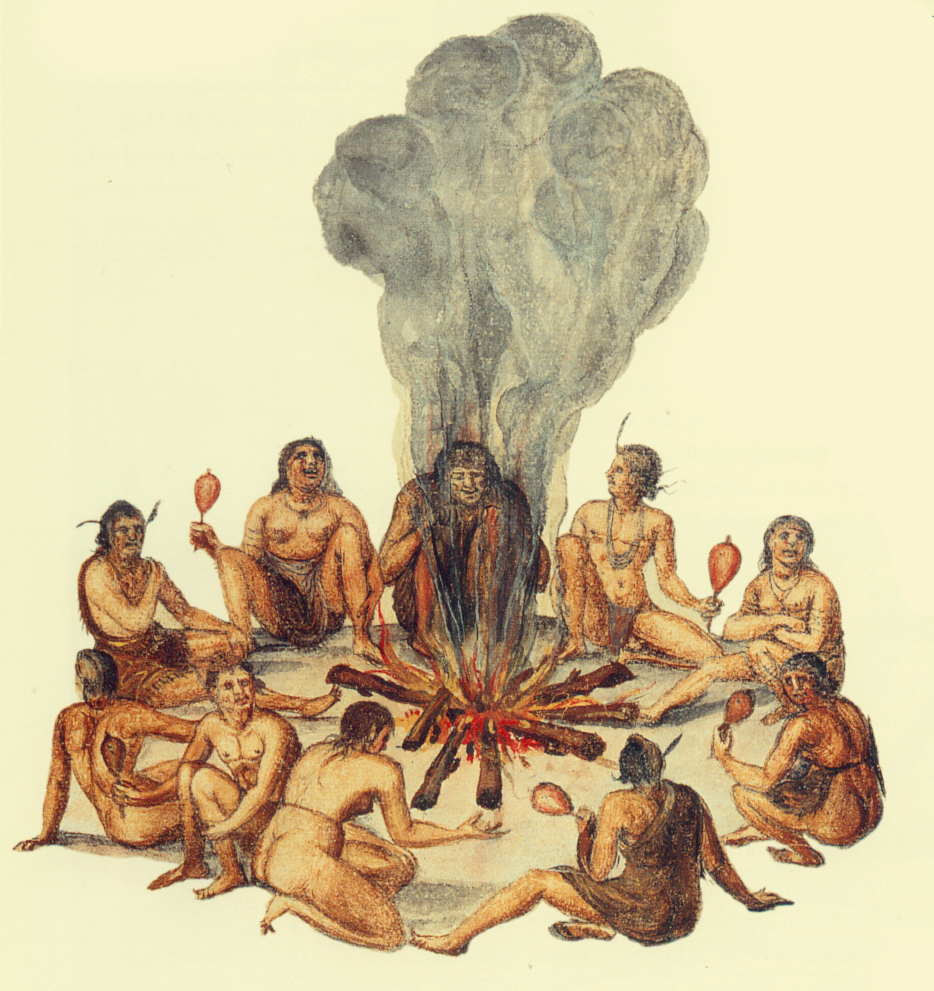|
Rosalindidae
Rosalindidae is a family of cnidarians belonging to the order Anthoathecata. Description Rosalindidae are hydrozoans that are characterized by their ability to form colonies of polyps and attach to various surfaces, such as seaweed and shells, in the ocean. Rosalindidae are classified as invertebrates. They are considered epibionts, which rely on other invertebrates to live and develop. Although hydroids like Rosalindidae typically live on hard substrates and among coral rubble, as well as colonize scleractinia, researchers have found Rosalindidae growing on larger animal hosts such as ''Cladocarpus paradiseus'' hydroids. Rosalindidae form monomorphic colonies (monomorphism) in contrast to the polymorphic colonies (polymorphism) that characterize other hydrozoan families. Rosalindidae make up the order Anthoathecata - a hydroid group generally known for its fragility due to the lack of a perisarc to protect its gonophores and hydranths. However, colonies of polyps that fall un ... [...More Info...] [...Related Items...] OR: [Wikipedia] [Google] [Baidu] |
Anthoathecata
Anthoathecata, or the athecate hydroids, are an order of hydrozoans belonging to the phylum Cnidaria. A profusion of alternate scientific names exists for this long-known, heavily discussed, and spectacular group. It has also been called Gymnoblastea and (with or without an emended ending ''-ae''), Anthomedusa, Athecata, Hydromedusa, and Stylasterina. There are about 1,200 species worldwide.Schuchert, P. (2014). Anthoathecata. Accessed through: Schuchert, P. (2014) World Hydrozoa database at http://www.marinespecies.org/hydrozoa/aphia.php?p=taxdetails&id=13551 on 2014-10-31 These hydrozoans always have a polyp stage. Their hydranths grow either solitary or in colonies. There is no firm perisarc around the polyp body. The medusae, or jellyfish, are solitary animals, with tentacles arising from the bell margin, lacking statocysts but possessing radial canals. Their gonads are on the manubrium ("handle").Bouillon, J.; Gravili, C.; Pagès, F.; Gili, J.-M.; Boero, F. (2006). An in ... [...More Info...] [...Related Items...] OR: [Wikipedia] [Google] [Baidu] |
Clytia Hemisphaerica Polyp Colony
In Greek mythology, the name Clytie (Ancient Greek: Κλυτίη, Ionic) or Clytia (, Attic and other dialects) may refer to: * Clytie (Oceanid), known for her unrequited love for Helios. Out of jealousy, Clytie arranged the death of Leucothoe, Helios' lover. *Clytie, daughter of Pandareus and sister of Cameiro. Cameiro and Clytie lost their parents to the wrath of gods and were reared by Aphrodite. They received gifts from other Olympic goddesses as well: wisdom and beauty from Hera, high stature from Artemis, skill in handiwork from Athena. When Aphrodite left for Olympus to arrange for the sisters to get happily married in the future, the girls, left without supervision, were abducted by the Harpies and given by them to the Erinyes. *Clytie, daughter of Merops, wife of Eurypylus of Cos, mother of Chalcon and Antagoras. She received Demeter as guest. *Clytie, daughter of Amphidamas and possible mother of Pelops by Tantalus.Robert Graves. '' The Greek Myths'', section 10 ... [...More Info...] [...Related Items...] OR: [Wikipedia] [Google] [Baidu] |
Bass Strait
Bass Strait () is a strait separating the island state of Tasmania from the Australian mainland (more specifically the coast of Victoria, with the exception of the land border across Boundary Islet). The strait provides the most direct waterway between the Great Australian Bight and the Tasman Sea, and is also the only maritime route into the economically prominent Port Phillip Bay. Formed 8,000 years ago by rising sea levels at the end of the last glacial period, the strait was named after English explorer and physician George Bass (1771-1803) by European colonists. Extent The International Hydrographic Organization defines the limits of Bass Strait as follows: :''On the west.'' The eastern limit of the Great Australian Bight Cape Otway">eing a line from Cape Otway, Australia, to King Island (Tasmania)">King Island and thence to Cape Grim, the northwest extreme of Tasmania]. :''On the east.'' The western limit of the Tasman Sea between Gabo Island and Eddystone ... [...More Info...] [...Related Items...] OR: [Wikipedia] [Google] [Baidu] |
Mauritania
Mauritania (; ar, موريتانيا, ', french: Mauritanie; Berber languages, Berber: ''Agawej'' or ''Cengit''; Pulaar language, Pulaar: ''Moritani''; Wolof language, Wolof: ''Gànnaar''; Soninke language, Soninke:), officially the Islamic Republic of Mauritania ( ar, الجمهورية الإسلامية الموريتانية), is a sovereign country in West Africa. It is bordered by the Atlantic Ocean to the west, Western Sahara to Mauritania–Western Sahara border, the north and northwest, Algeria to Algeria–Mauritania border, the northeast, Mali to Mali–Mauritania border, the east and southeast, and Senegal to Mauritania–Senegal border, the southwest. Mauritania is the 11th-largest country in Africa and the 28th-largest in the world, and 90% of its territory is situated in the Sahara. Most of its population of 4.4 million lives in the temperate south of the country, with roughly one-third concentrated in the Capital city, capital and largest city, Nouakchott, loca ... [...More Info...] [...Related Items...] OR: [Wikipedia] [Google] [Baidu] |
Northern Angola
Angola is located on the western Atlantic Coast of Southern Africa between Namibia and the Republic of the Congo. It also is bordered by the Democratic Republic of the Congo and Zambia to the east. The country consists of a sparsely watered and somewhat sterile coastal plain extending inland for a distance varying from . Slightly inland and parallel to the coast is a belt of hills and mountains and behind those a large plateau. The total land size is . It has an Exclusive Economic Zone of . Geology There are three regions of rock formations in Angola: the littoral zone, the median zone formed by a series of hills more or less parallel with the coast, and the central plateau. The central plateau consists of ancient crystalline rocks with granites overlain by non-fossiliferous sandstones and Conglomerate (geology), conglomerates of Paleozoic age. The outcrops are largely hidden under laterite. The median zone is composed largely of crystalline rocks with granites and some Pal ... [...More Info...] [...Related Items...] OR: [Wikipedia] [Google] [Baidu] |
Bivalvia
Bivalvia (), in previous centuries referred to as the Lamellibranchiata and Pelecypoda, is a class of marine and freshwater molluscs that have laterally compressed bodies enclosed by a shell consisting of two hinged parts. As a group, bivalves have no head and they lack some usual molluscan organs, like the radula and the odontophore. They include the clams, oysters, cockles, mussels, scallops, and numerous other families that live in saltwater, as well as a number of families that live in freshwater. The majority are filter feeders. The gills have evolved into ctenidia, specialised organs for feeding and breathing. Most bivalves bury themselves in sediment, where they are relatively safe from predation. Others lie on the sea floor or attach themselves to rocks or other hard surfaces. Some bivalves, such as the scallops and file shells, can swim. The shipworms bore into wood, clay, or stone and live inside these substances. The shell of a bivalve is composed o ... [...More Info...] [...Related Items...] OR: [Wikipedia] [Google] [Baidu] |
Sagami Bay
lies south of Kanagawa Prefecture in Honshu, central Japan, contained within the scope of the Miura Peninsula, in Kanagawa, to the east, the Izu Peninsula, in Shizuoka Prefecture, to the west, and the Shōnan coastline to the north, while the island of Izu Ōshima marks the southern extent of the bay. It lies approximately southwest of the capital, Tokyo. Cities on the bay include Odawara, Chigasaki, Fujisawa, Hiratsuka, Itō, and Kamakura. History The center of the Great Kantō earthquake in 1923 was deep beneath Izu Ōshima Island in Sagami Bay. It devastated Tokyo, the port city of Yokohama, and the surrounding prefectures of Chiba, Kanagawa, and Shizuoka, and caused widespread damage throughout the Kantō region. The shallow nature of the seabed on the north of the bay, and the funnelling effect of tsunami and typhoon wave energy, contributed to certain parts of the Shonan coast having suffered considerable damage, including the destruction of the Kō ... [...More Info...] [...Related Items...] OR: [Wikipedia] [Google] [Baidu] |
Bay Of Biscay
The Bay of Biscay (), known in Spain as the Gulf of Biscay ( es, Golfo de Vizcaya, eu, Bizkaiko Golkoa), and in France and some border regions as the Gulf of Gascony (french: Golfe de Gascogne, oc, Golf de Gasconha, br, Pleg-mor Gwaskogn), is a gulf of the northeast Atlantic Ocean located south of the Celtic Sea. It lies along the western coast of France from Point Penmarc'h to the Spanish border, and the northern coast of Spain west to Cape Ortegal. The south area of the Bay of Biscay that washes over the northern coast of Spain is known locally as the Cantabrian Sea. The average depth is and the greatest depth is . Name The Bay of Biscay is named (for English speakers) after Biscay on the northern Spanish coast, probably standing for the western Basque districts (''Biscay'' up to the early 19th century). Its name in other languages is: * ast, Mar Cantábricu * eu, Bizkaiko golkoa * br, pleg-mor Gwaskogn * french: golfe de Gascogne (named after Gascony, France) * ... [...More Info...] [...Related Items...] OR: [Wikipedia] [Google] [Baidu] |
Bathyal Zone
The bathypelagic zone or bathyal zone (from Greek βαθύς (bathýs), deep) is the part of the open ocean that extends from a depth of below the ocean surface. It lies between the mesopelagic above, and the abyssopelagic below. The bathypelagic is known as the midnight zone because of the lack of sunlight; this feature does not allow for photosynthesis-driven primary production, preventing growth of phytoplankton or aquatic plants. Although larger by volume than the photic zone, our knowledge of the bathypelagic zone remains limited by our ability to explore the deep ocean. Physical characteristics The bathypelagic zone is characterized by a nearly constant temperature of approximately and a salinity range of 33-35 g/kg. This region has little to no light, because sunlight does not reach this deep in the ocean and bioluminescence is limited. The hydrostatic pressure in this zone ranges 100-400 atmospheres (atm), due to the increase of 1 atm for every 10 m depth. It is ... [...More Info...] [...Related Items...] OR: [Wikipedia] [Google] [Baidu] |
Neritic Zone
The neritic zone (or sublittoral zone) is the relatively shallow part of the ocean above the drop-off of the continental shelf, approximately in depth. From the point of view of marine biology it forms a relatively stable and well-illuminated environment for marine life, from plankton up to large fish and corals, while physical oceanography sees it as where the oceanic system interacts with the coast. Definition (marine biology), context, extra terminology In marine biology, the neritic zone, also called coastal waters, the coastal ocean or the sublittoral zone, refers to that zone of the ocean where sunlight reaches the ocean floor, that is, where the water is never so deep as to take it out of the photic zone. It extends from the low tide mark to the edge of the continental shelf, with a relatively shallow depth extending to about 200 meters (660 feet). Above the neritic zone lie the intertidal (or eulittoral) and supralittoral zones; below it the continental slope be ... [...More Info...] [...Related Items...] OR: [Wikipedia] [Google] [Baidu] |
Florida
Florida is a state located in the Southeastern region of the United States. Florida is bordered to the west by the Gulf of Mexico, to the northwest by Alabama, to the north by Georgia, to the east by the Bahamas and Atlantic Ocean, and to the south by the Straits of Florida and Cuba; it is the only state that borders both the Gulf of Mexico and the Atlantic Ocean. Spanning , Florida ranks 22nd in area among the 50 states, and with a population of over 21 million, it is the third-most populous. The state capital is Tallahassee, and the most populous city is Jacksonville. The Miami metropolitan area, with a population of almost 6.2 million, is the most populous urban area in Florida and the ninth-most populous in the United States; other urban conurbations with over one million people are Tampa Bay, Orlando, and Jacksonville. Various Native American groups have inhabited Florida for at least 14,000 years. In 1513, Spanish explorer Juan Ponce de León became th ... [...More Info...] [...Related Items...] OR: [Wikipedia] [Google] [Baidu] |
North Carolina
North Carolina () is a state in the Southeastern region of the United States. The state is the 28th largest and 9th-most populous of the United States. It is bordered by Virginia to the north, the Atlantic Ocean to the east, Georgia and South Carolina to the south, and Tennessee to the west. In the 2020 census, the state had a population of 10,439,388. Raleigh is the state's capital and Charlotte is its largest city. The Charlotte metropolitan area, with a population of 2,595,027 in 2020, is the most-populous metropolitan area in North Carolina, the 21st-most populous in the United States, and the largest banking center in the nation after New York City. The Raleigh-Durham-Cary combined statistical area is the second-largest metropolitan area in the state and 32nd-most populous in the United States, with a population of 2,043,867 in 2020, and is home to the largest research park in the United States, Research Triangle Park. The earliest evidence of human occu ... [...More Info...] [...Related Items...] OR: [Wikipedia] [Google] [Baidu] |






